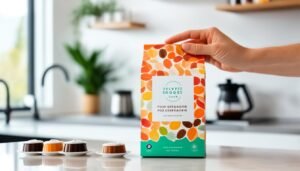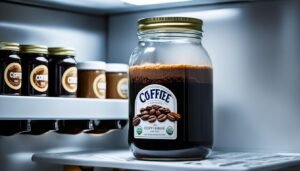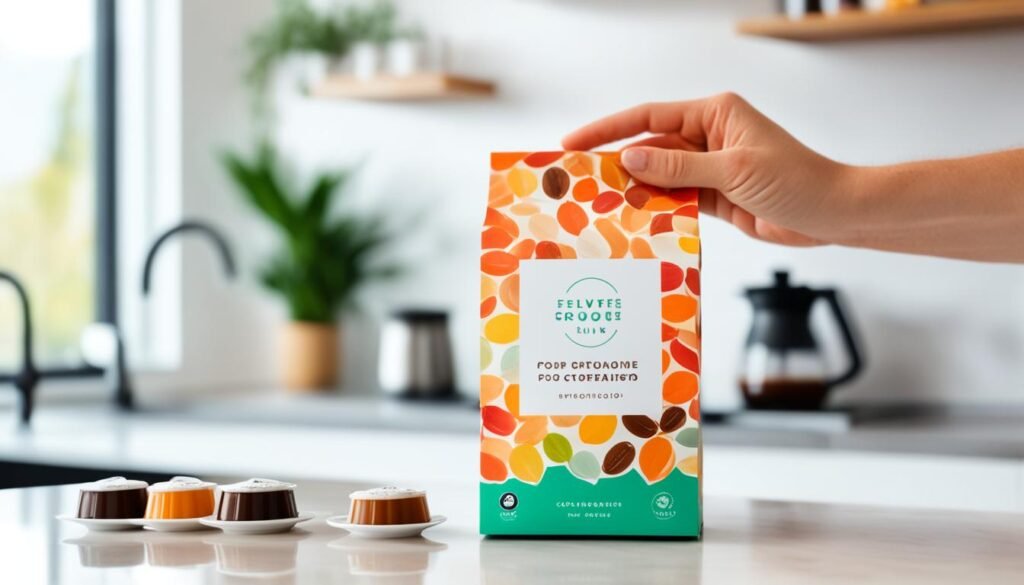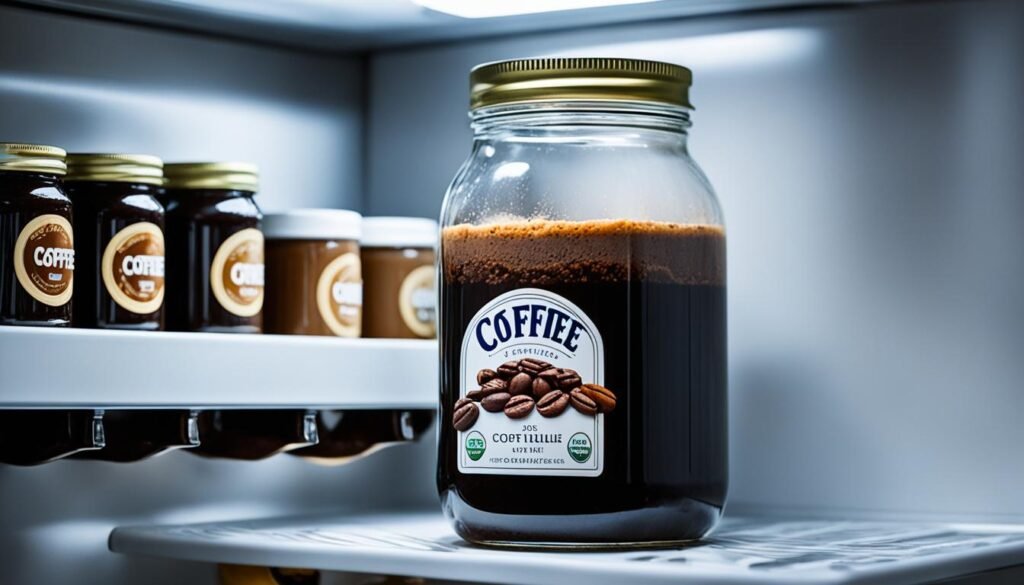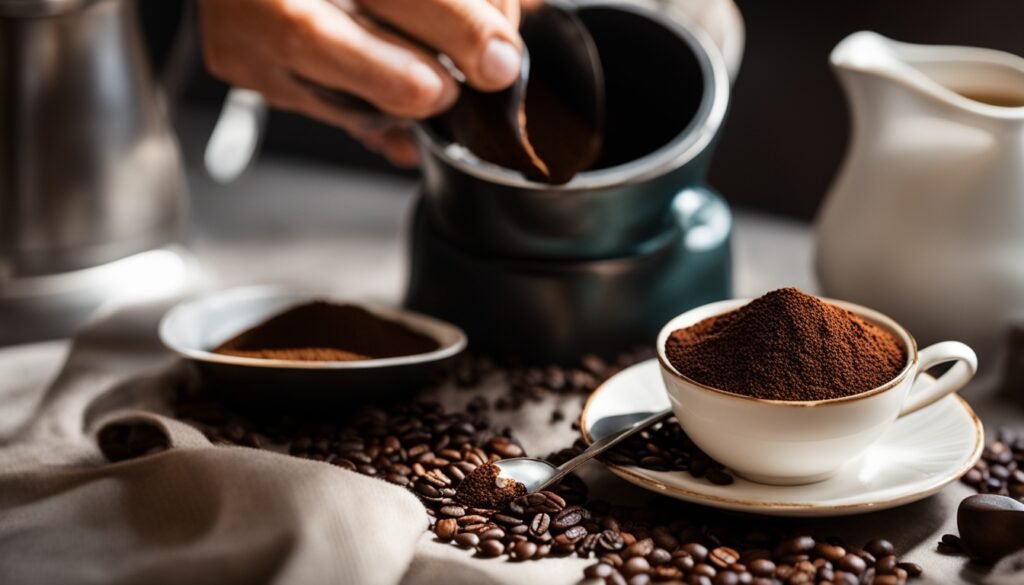Powdered sugar can enhance your coffee experience with its fine texture and quick dissolution rate. When brewing, use high-quality beans and follow recommended ratios for a balanced brew. Gradually add powdered sugar, stirring until fully dissolved, to achieve desired sweetness. Experiment with different amounts and consider incorporating cinnamon, vanilla, or cocoa for added complexity. For iced coffee, less sugar may be needed due to cold temperatures affecting dissolution. Alternatives like honey, stevia, or agave can offer unique flavors and health benefits. By mastering these techniques, you can create a personalized coffee experience that goes beyond simple sweetness.
The Powdered Sugar Advantage
Powdered sugar's fine texture and quick dissolution rate offer coffee enthusiasts a unique advantage when sweetening their brew. This versatile ingredient, commonly used in baking applications and as dessert toppings, can elevate the coffee experience. Unlike granulated sugar, powdered sugar dissolves rapidly, ensuring a smooth and consistent sweetness throughout the drink.
When comparing sweetness, powdered sugar is slightly more intense than its granulated counterpart. This allows coffee drinkers to achieve their desired level of sweetness with less product, potentially reducing overall sugar intake. The dissolving speed of powdered sugar is particularly beneficial in iced coffee preparations, where granulated sugar may struggle to fully incorporate.
Additionally, powdered sugar can add a subtle complexity to coffee's flavor profile, enhancing the overall taste without overpowering the natural notes of the beans. This makes it an excellent option for those seeking to refine their coffee-drinking experience.
Brewing Techniques
To fully harness the benefits of powdered sugar in coffee, it's important to employ proper brewing techniques that complement this unique sweetener. Begin by using high-quality, freshly ground coffee beans and cold water for best flavor extraction.
Follow recommended coffee ratios, typically one tablespoon of coffee per six ounces of water, for a balanced brew. When incorporating powdered sugar, practice sweetness moderation to avoid overpowering the coffee's natural flavors.
Add the sugar gradually, stirring until fully dissolved, to achieve your desired level of sweetness. Remember that powdered sugar dissolves more quickly than granulated sugar, so start with a smaller amount and adjust as needed.
Flavor Enhancement Tips

While powdered sugar can enhance coffee sweetness, there are additional techniques to elevate your brew's flavor profile. Achieving the perfect sweetness balance is essential for a satisfying cup. Experiment with different ratios of powdered sugar to find your ideal level of sweetness. To increase flavor complexity, consider these complementary additions:
| Addition | Flavor Profile | Recommended Amount |
|---|---|---|
| Cinnamon | Warm, spicy | 1/4 tsp per cup |
| Vanilla | Sweet, aromatic | 1/8 tsp per cup |
| Cocoa | Rich, chocolatey | 1/2 tsp per cup |
These additions can enhance your coffee's taste without overpowering the natural flavors. Remember to adjust the amount of powdered sugar when incorporating these elements to maintain the desired sweetness balance. By carefully combining these flavor enhancers, you can create a unique and personalized coffee experience that goes beyond simple sweetness.
Iced Coffee Considerations
When preparing iced coffee, the use of powdered sugar requires additional considerations compared to its hot counterpart.
Iced coffees typically have a higher sweetness balance due to the cold temperature affecting taste perception. This means that less powdered sugar may be needed to achieve the desired sweetness level.
It's crucial to keep in mind that cold brews, a popular method for making iced coffee, often have a naturally smoother and less bitter taste, which can further impact the amount of sweetener required.
When adding powdered sugar to iced coffee, it's vital to stir thoroughly to ensure complete dissolution. The cold temperature can make it more challenging for the sugar to dissolve compared to hot coffee.
To maintain the ideal flavor profile, consider preparing a simple syrup with powdered sugar in advance, which can be easily mixed into cold beverages without leaving undissolved particles.
Alternative Sweeteners
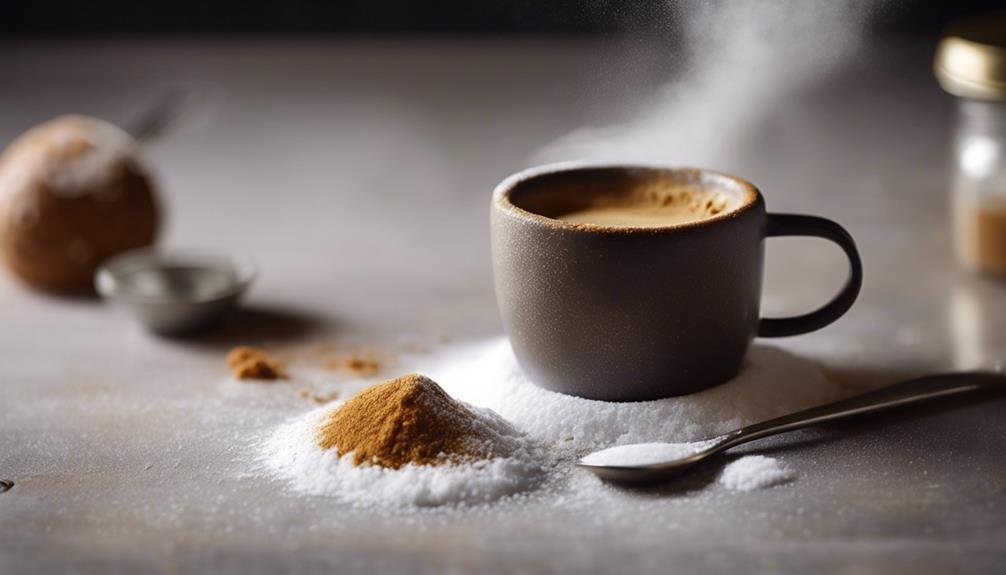
Coffee enthusiasts seeking alternatives to traditional sugars have several options to explore for sweetening their brew. While powdered sugar offers a unique sweetness, other alternatives can cater to different taste preferences and health benefits. Here's a comparison of popular sweeteners:
| Sweetener | Taste Profile | Health Benefits |
|---|---|---|
| Honey | Floral, rich | Natural energy |
| Stevia | Very sweet | Zero calories |
| Agave | Mild, neutral | Low glycemic |
| Maple syrup | Distinct, woody | Antioxidants |
| Coconut sugar | Caramel-like | Minerals |
Each alternative sweetener brings its own characteristics to coffee. Honey, for instance, provides natural energy and may help with allergies. Stevia is calorie-free, making it suitable for those watching their sugar intake. When choosing a sweetener, consider both taste preferences and potential health benefits. Experimenting with different options can lead to discovering the perfect balance for your coffee experience.
Conclusion
The journey into powdered sugar's role in coffee brewing reveals a landscape of untapped potential. Like a master painter's delicate brushstrokes, this fine sweetener adds subtle nuances to the coffee canvas.
The exploration of brewing techniques, flavor enhancements, and iced coffee applications sheds light on paths to elevate the daily brew. As coffee enthusiasts venture beyond conventional sweeteners, powdered sugar emerges as a versatile tool, offering a refined approach to customizing the coffee experience.
This knowledge empowers coffee lovers to craft their perfect cup with precision and creativity.

